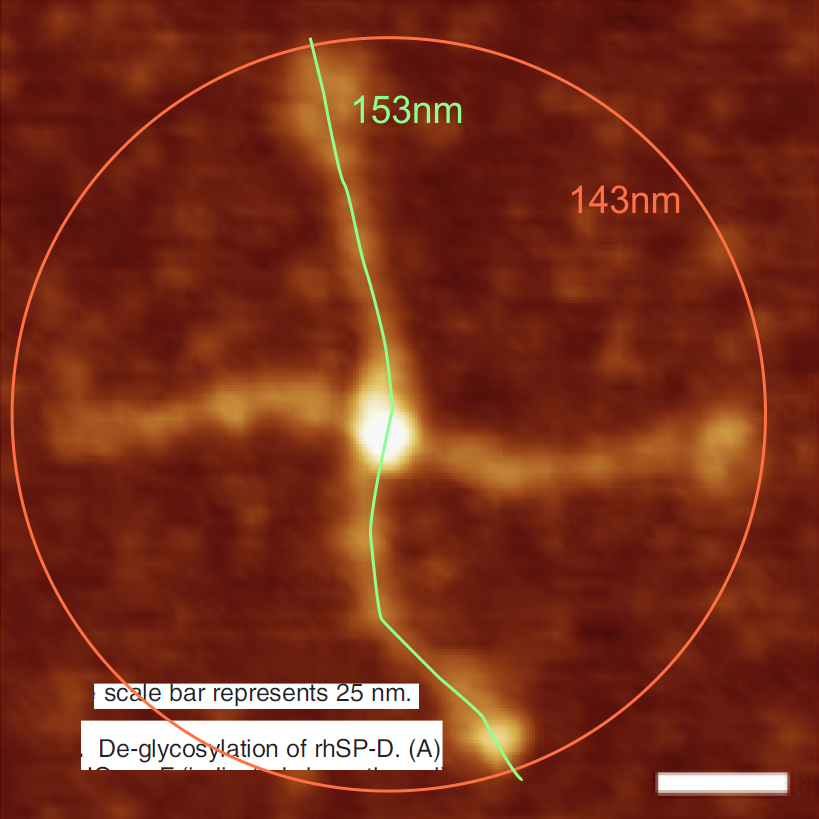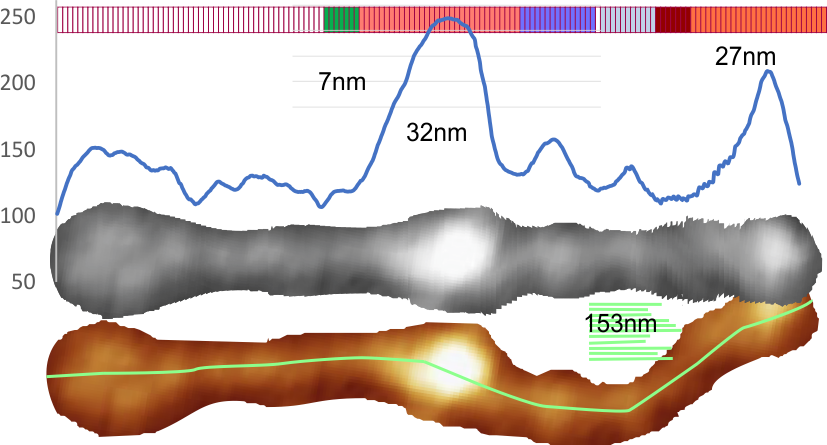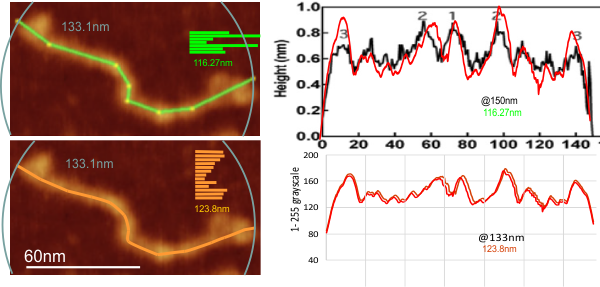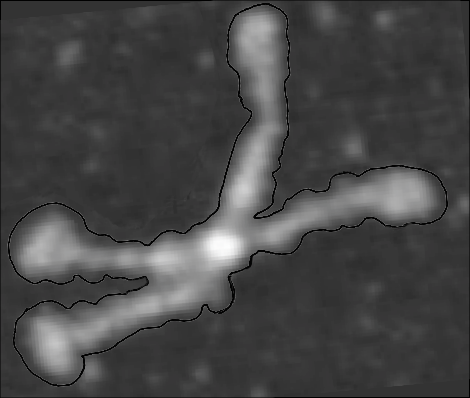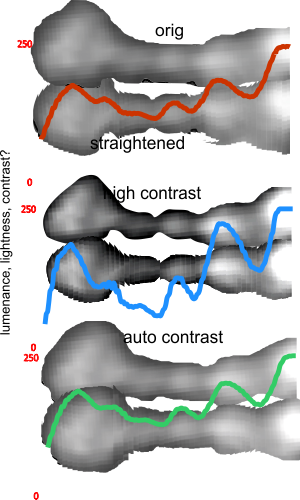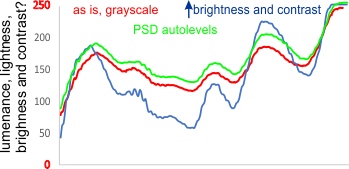Same original image from Arroyo in Friday’s post, has been trimmed and cut and centered and I though it didn’t have a CRD (or at least not a complete trimeric CRD component and the LUT plot clearly shows that something is not right with the CRD on the left hand side of the plot. Right hand peak first peak to the right of the Ntermini, the alleged glycosylation site which was de-glycosylated either has a greatly reduced peak height (compared to untreated dodecamers, or has flattened out and become part of peak 2 in the collagen like domain. It doesn’t seem likely that the peak itself is “gone” but rather has lost peak height. I will try to remember to measure the peak heights (and distances between them) to see if the those distances are at all like the intermittent peaks found in type … more plots required to determine which. CRD clearly present on the right hand side.
ASIDE: it seems that the alleged glycosylation site in the collagen-like domain gets really “high” or “bright” when two from each hexamer (in a dodecamer) are close together (or joined) which changes the shape and nm distance of the center (Ntermini)… sometimes this happens, sometimes not. A series of un-glycosylated images could be counted for such bright peaks where two are in close approximation vs those no treatment has occurred.

